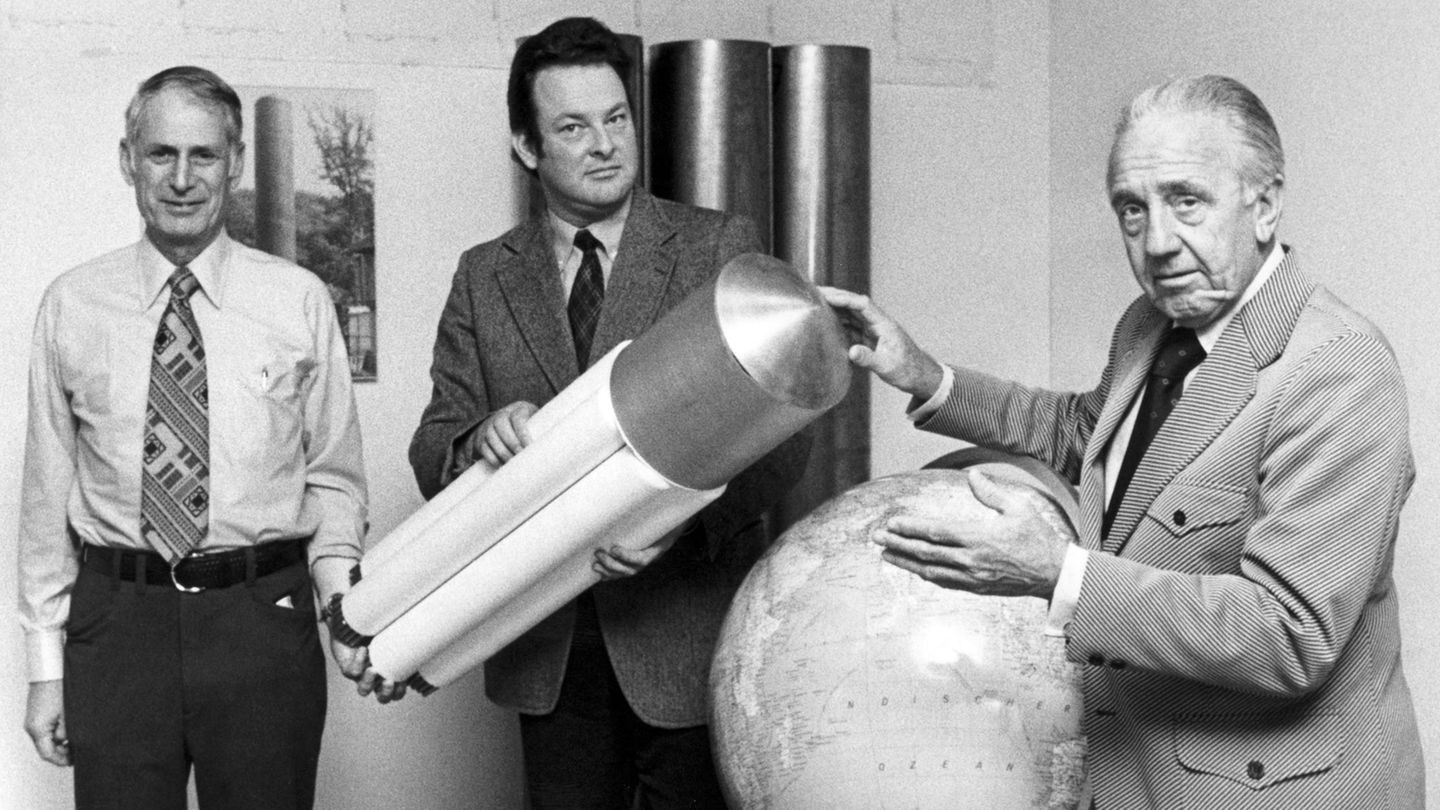Otr
For decades ahead of Elon Musk: How the German engineer Lutz Kayser wanted to go to the stars with his rocket company
Copy the current link
Add to the memorial list
The German engineer Lutz Kayser founded the first private space company. Instead of in space, the project ended in the African jungle – and in diplomatic complications.
In the 1970s, for decades ahead of Elon Musk or Jeff Bezos, a German engineer started to conquer space with his company – and thus earn money. His name: Lutz Kayser. His company: the Orbital Transport and rocket stock corporation, for short OTr.
Kayser was born in Stuttgart in 1939 and worked and experimented with rockets as a child, as “PM” wrote. He later studied aeronautics and space travel, in 1970 he founded his first company, from which the Otlag emerged a few years later. Kaysers striving is to develop a commercially usable inexpensive rocket. He receives money for his development from the Federal Ministry of Research. But private investors also put money into the young company.
The concept of his Otagrakete: Instead of a few large, it consisted of several bundled smaller engines. A single engine was made from inexpensive standard components. Commercial pipes were used as a tank and windscreen wiper engines for the valves. A rocket could be assembled by a few employees from a single source – up to around 1000 goods – up to around 1000 goods. Individual engines should be switched on and off for the control, with individual failures the opposite engine should be automatically switched off in order not to dissuade the rocket from the course.
This bundle concept should keep the costs below and the flexibility. Small and large satellites should be transported to space inexpensively, even nuclear waste disposed of in space. According to “Spiegel”, Kayser let the German Society for Returning Core Funnies go to the German Society for Returning. “That was our philosophy. Not high-tech, but low cost,” says a former Odr employee about it in the documentary “Fly Rocket Fly”.
A test area as large as the GDR
There was a first test bench for the engines in Lampoldshausen in Baden-Württemberg. However, test flights of the rockets were not possible because of the dense settlement in Europe. In search of an area for the starts, Kayser finally found what they were looking for in Central Africa. In 1976, dictator Mobutu Sese Seko leased a 100,000 square kilometer area in the then Zaire for unrestricted use. This roughly corresponds to the size of the former GDR. In principle, Kayser was able to freely dispose of this area, had quasi extraterritorial rights. He also secured the rights to scare the soil treasures. Media wrote, among other things, of the “Kayser Empire” in Africa and Mobutus dream of an “African Cape Kennedy”.
In addition to a control center and a launch ramp, an airport was built in addition to a control center. A separate airline was founded for the parts transport. Two first rocket starts were promising. Mobutu was impressed by the project. Apparently, it was written, he hoped to be able to shoot spy satellites into space at some point. The third start, which was supposed to make the breakthrough, went wrong under the eyes of the ruler: the rocket tilted aside after the start and finally fell into the jungle. However, the diplomatic and political crashes that triggered the Otag with their activities in Africa were worse than the crash.
Otrag in Zaire: Peenemünde in the jungle?
Kayser always assured that his rockets were only intended for civilian purposes. The SED central organ “New Germany”, however, sensed a “cover company for the FRG armaments industry” behind the Otrag with which the Federal Republic was banned in the ban on missile armor. In the Soviet Union you could see it similarly, as well as in some neighboring countries of Zaires. There you were afraid of a new Peenemünde in the heart of Africa. From the Baltic Sea site on Usedom, the Nazis once shot the first rocket into space with the V2.
France, on the other hand, also saw unpleasant competition for the European “Ariane” rocket. Chancellor Helmut Schmidt got the trouble about the Otag on Africa visits and other occasions. Angola even refused to accept diplomatic relationships with the Federal Republic because of the Otag. “I could turn my neck around the guy,” Schmidt was said to have sweared according to “Zeit” with a view of Lutz Kayser.
In the end, the entanglements caused Mobutu to terminate the uncertable conflict with the Otrag. The company once again attended another dictator: Muhammar Gaddaffi in Libya. In the end, this endeavor also remained lucky. In 1986 the Otrag was closed. Kayser spent his retirement on the South Sea island of Bikendrik Island, which is one of the Marhall Islands. He died in 2019 at the age of 78.
Lutz Kayser’s dream of the first private company, which shoots rockets into space, was fulfilled by another visionary decades after the end of the Otag: Elon Musk company Space X Schoss in 2008 the first privately developed rocket into orbit. Perhaps Kayser followed the success in his neighborhood: Musks “Falcon I” started from Omelek Island, as the crow flies around 500 kilometers from Kayser’s retirement home.
Sources: “PM” (10/2019), “Zeit” (32/2008), “Der Spiegel” (33/1978), (film page “Fly Rocket Fly”)
Source: Stern




